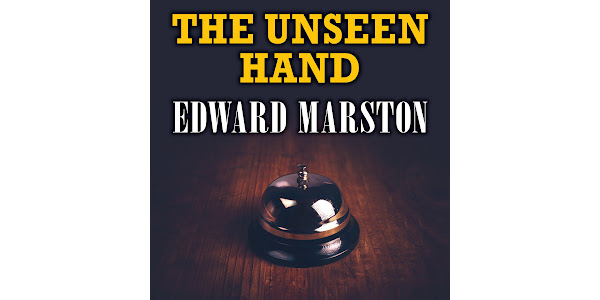In our increasingly digital lives, the phrase “Terms & Conditions” often evokes a collective sigh. These sprawling legal documents, usually presented as an unavoidable prerequisite to accessing online services, are the unseen architecture governing our digital interactions. While few of us dedicate the hours required to pore over every clause, understanding their core implications is crucial for navigating the modern internet. Let`s peel back the layers of a typical digital compact, exemplified by major media and communication providers, to illuminate the profound agreements we routinely enter into.
The Digital Gatekeepers: Why Such Elaborate Rules?
At first glance, a lengthy Terms & Conditions document might seem like corporate overreach. Yet, for entities operating vast digital properties—from streaming platforms and news sites to social media and communication services—these agreements serve as indispensable legal fortifications. They are designed to:
- Protect Intellectual Property: Safeguarding vast libraries of content, from broadcast rights to proprietary software.
- Manage User Conduct: Setting boundaries for acceptable online behavior, preventing abuse, and fostering a (relatively) civil environment.
- Limit Liability: Shielding the company from unforeseen issues, be it service interruptions, data breaches, or the actions of its users.
- Define Service Parameters: Clarifying what users can expect, what they`re paying for (if applicable), and the technical requirements for access.
Think of it as the constitutional framework of a digital nation, detailing rights, responsibilities, and repercussions for both the governing body (the company) and its citizens (the users).
Your Digital Footprint: Privacy and the Unspoken Exchange
A significant portion of any modern T&C addresses privacy. While dedicated privacy policies elaborate further, the terms often reiterate that personal information, while respected, is collected, used, and processed – potentially across borders. This is the fundamental trade-off of many “free” online services: you provide data, and in return, you gain access.
“Our collection, use and disclosure of personal information in connection with a Rogers Media Site are governed by the Rogers Media Privacy FAQ… Personal information collected in connection with a Rogers Media Site may be stored and processed in or outside Canada and may be subject to the laws of other jurisdictions.”
This statement, typical across the industry, subtly reminds users that their digital existence isn`t confined by geographical borders and that national laws may apply to their data, even if stored elsewhere.
Content is King, But Who Owns the Crown?
One of the most frequently misunderstood aspects relates to content ownership, particularly user-generated contributions. When you upload, post, or share content on a platform, you often grant the service provider an astonishingly broad license.
This “worldwide, royalty-free, non-exclusive, perpetual, irrevocable, fully sub-licensable and transferable license” means that your carefully crafted comment, photo, or video essentially becomes a tool for the company`s disposal, free from future claims or compensation. Simultaneously, all content provided by the company remains its valuable intellectual property, with strict restrictions against unauthorized reproduction or commercial use by you.
The Rules of Engagement: Acceptable Use and the Digital Warden
To maintain order, T&Cs invariably include an “Acceptable Use Policy” (AUP). This section is the digital equivalent of a public square`s code of conduct. It explicitly lists prohibited activities, ranging from illegal content and fraudulent schemes to invading privacy, infringing copyrights, and disrupting network services. Spamming, hacking attempts, operating unauthorized servers, and even excessive network traffic (in the context of “unlimited” plans) are typically off-limits.
Breaching these rules can lead to swift consequences, including suspension or outright termination of your account and services, often without prior notice. The service provider acts as the ultimate arbiter, with the right to remove any content deemed “unacceptable, undesirable, or in violation of any law.”
Subscription Realities and Software Subtleties
For paid services, T&Cs clarify payment terms, automatic renewals, and the often-unyielding “no refunds” policy. The auto-renewal clause, in particular, is a financial tripwire many users overlook, leading to unexpected charges unless proactively cancelled.
Software provided for access (e.g., mobile apps) comes with its own set of fascinating caveats. You`re granted a license, not ownership. This means you can`t reverse-engineer, modify, or resell it. Furthermore, companies reserve the right to collect non-personal information about your devices, change features, impose limits, and even delete data from their servers without notice. The subtle implication? Your digital tools are on borrowed time and subject to the provider`s whims.
The Ultimate Backstop: Disclaimers and Limitations of Liability
Perhaps the most legally formidable sections are those concerning “No Warranties” and “Limitations of Liability.” These clauses broadly state that services are provided “as is,” without guarantees of performance, accuracy, or uninterrupted access. The provider often disclaims responsibility for almost any type of damage, direct or indirect, arising from your use or inability to use the services.
Professional information offered on platforms (e.g., health, financial advice) is explicitly presented for informational purposes only, not as professional guidance. Similarly, third-party merchandise or links are disclaimed, absolving the provider from responsibility for their quality or accuracy. In essence, while they provide the platform, the onus of vigilance remains firmly on the user.
Navigating the Digital Maze: A Call for Awareness
The sheer volume and complexity of Terms & Conditions make them daunting. Yet, these documents are more than just legal jargon; they are the bedrock of our digital society, defining the intricate relationship between users and service providers. While no one expects every user to become a legal scholar, a fundamental awareness of what we implicitly agree to with every click of “I Agree” is no longer optional. It`s an essential skill for informed digital citizenship, empowering us to make conscious choices about our online data, content, and conduct.

